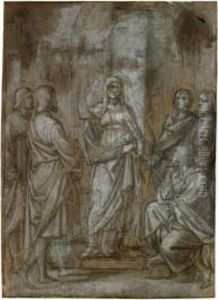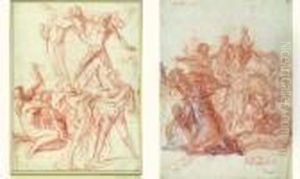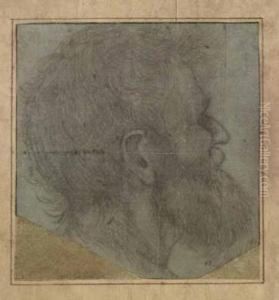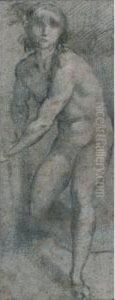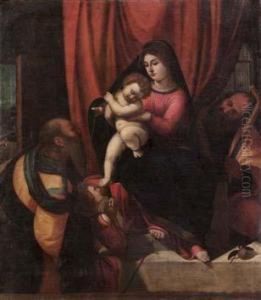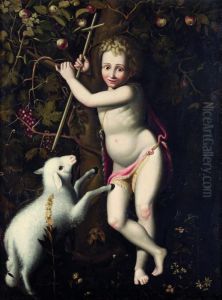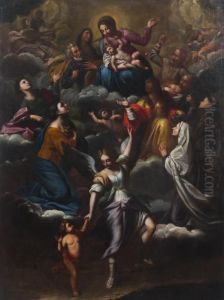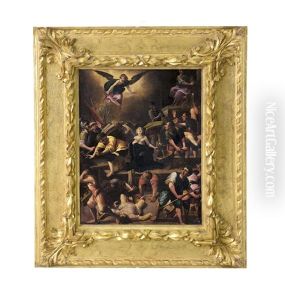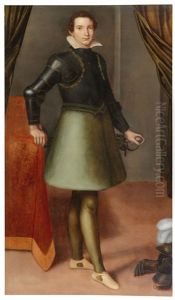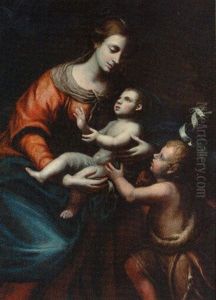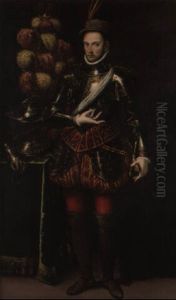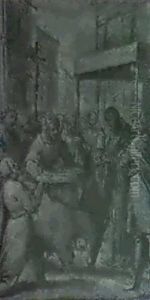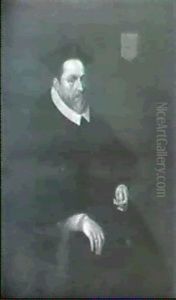Enea Salmeggia Talpino Paintings
Enea Salmeggia, also known as Il Talpino, was an Italian painter active during the late Renaissance period. Born in 1556 in Bergamo, then part of the Republic of Venice, he grew up in an era that saw the flourishing of the arts across Italy. Salmeggia's artistic journey began as an apprentice in the Venetian workshops, a common practice for young artists at the time, which allowed them to learn from established masters and hone their craft.
Salmeggia's work was significantly influenced by the Venetian school, particularly by the rich color palette and the use of light that characterized the work of artists such as Titian and Tintoretto. However, he was also exposed to the Lombard and Emilian schools, which influenced his stylistic development. Over time, Salmeggia developed a distinctive style that combined the luminous coloration typical of the Venetians with the expressive forms and detailed naturalism found in Lombard and Emilian art.
Throughout his career, Salmeggia primarily focused on religious subjects, which were in high demand during the Counter-Reformation when the Catholic Church sought to reaffirm its spiritual narratives through art. He created numerous altarpieces, frescoes, and canvases for churches, which helped to establish his reputation. His works often depicted scenes from the life of Christ, the Virgin Mary, and the saints, imbued with a sense of piety and devotion that resonated with the religious climate of the period.
Il Talpino's artistry earned him commissions not just in his native Bergamo but also in other cities in Northern Italy. Despite his success, Salmeggia did not establish a large workshop or school, as many of his contemporaries did. Nevertheless, his influence was felt by other artists in the region, and his works continued to be appreciated for their devotional quality and technical skill.
Enea Salmeggia passed away in 1626, leaving behind a body of work that reflects the transitional period between the High Renaissance and the Baroque. His paintings can still be seen in various churches and museums, where they continue to be studied and admired for their blend of regional artistic traditions and the unique touch of the artist known as Il Talpino.
